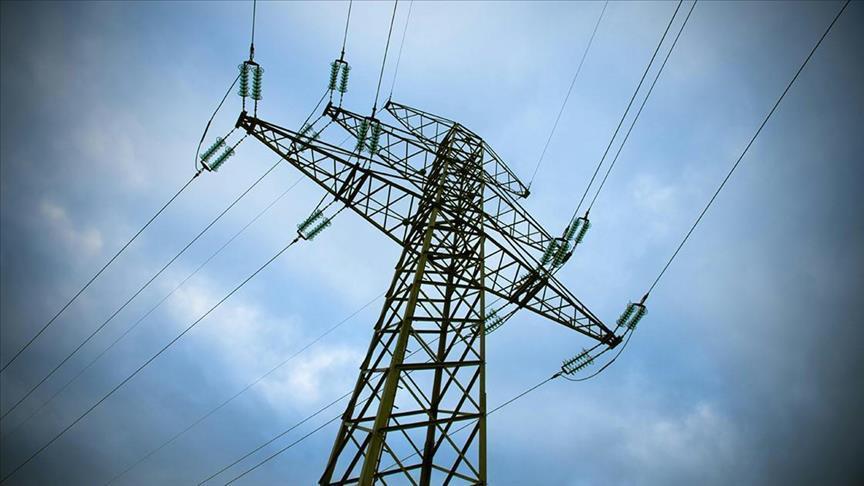

By Anadolu Agency
The world is rapidly transitioning to an electric energy system, driven by a growing reliance on clean sources, according to a new report by the International Energy Agency (IEA) on Wednesday.
The IEA’s annual report World Energy Outlook 2024 highlights the urgent need for governments and consumers to make strategic decisions as energy supply and demand dynamics change.
‘In previous World Energy Outlooks, the IEA made it clear that the future of the global energy system is electric – and now it is visible to everyone,’ said Fatih Birol, the IEA executive director.
After experiencing the ‘Age of Coal and the Age of Oil,’ Birol noted there is now a speedy move to the Age of Electricity which will ‘define the global energy system going forward and increasingly be based on clean sources of electricity.’
Tim Gould, chief energy economist at the IEA and one of the lead authors of the report told Anadolu that electricity is central to meeting people’s needs as consumers.
‘That is why we are talking about a new age of electricity as the sort of defining characteristic of our future energy system,’ Gould added.
According to Gould, for consumers, the electricity bill will be the primary interaction with the energy system.
‘The number that we will care most about when we look at the energy system is not necessarily how many dollars per barrel oil is selling for or what the price of gasoline is at the petrol station. It will be how many cents per kilowatt-hour we are paying for electricity at home,’ IEA’s chief energy economist explained.
For Birol, China is a major part of what is happening with growing electricty demand.
From investment to renewable deployment, China is a major player in shaping the future of energy, he explained.
Birol said that China’s solar expansion is proceeding at such a rate that, by the early 2030s the country’s solar power generation alone could exceed the current electricity demand of the US.
– Geopolitical tensions compromise energy security
The report also explores how rising geopolitical uncertainties, emerging technologies, the clean energy transition and climate change affect energy security.
Current geopolitical tensions pose major risks to energy security and global efforts to reduce greenhouse gas emissions, according to the report.
Based on current policies, the IEA predicts a future energy market characterized by increased supply diversity but continued geopolitical challenges.
By the second half of the 2020s, the report anticipates an oversupply of oil, liquefied natural gas (LNG) and key clean energy technologies such as solar PV and batteries.
– Clean technology needs greater investment
Based on current policy settings, the IEA forecasts that low-emissions sources are set to generate more than half of the world’s electricity before 2030 while demand for coal, oil and gas is still projected to peak by the decade’s end.
Although clean energy is entering the energy system at an unprecedented rate, deployment is far from uniform across technologies and markets, the IEA says.
Electricity use has grown at twice the pace of overall energy demand over the last decade.
‘Global electricity demand growth is set to accelerate further in the years ahead, adding the equivalent of Japanese demand to global electricity use each year in a scenario based on today’s policy settings – and rising even more quickly in scenarios that meet national and global goals for achieving net zero emissions,’ the agency added.
According to the report, to sustain the rapid growth of clean energy, ‘much greater investment in new energy systems, especially in electricity grids and energy storage, are necessary.’
‘Today, for every dollar spent on renewable power, 60 cents are spent on grids and storage, highlighting how essential supporting infrastructure is not keeping pace with clean energy transitions,’ it added.
Despite growing momentum behind clean energy transitions, the report underlined that the world is still a long way from a trajectory aligned with its net zero goals.
– Electricity slowly replaces fossil fuels
Gould noted that in addition to these traditional elements, problems in the electricity sector, the security and resilience of clean energy supply chains, including critical minerals, are part of energy security.
‘An increasingly important part of our additional need for energy is just being met by electricity,’ he added.
Global electricity demand is rapidly growing each year, ‘because electricity is central to our modern lives, but also because some things that we used to use fossil fuels for are now being provided by electricity, like mobility and heating,’ Gould said.
‘We also have the rise of data centers, in part, also linked to increased use of artificial intelligence,’ he explained.
According to Gould, the building sector is the most electrified, while the transport sector remains heavily dependent on oil.
Noting that oil still accounts for a high share of overall consumption in the transport sector, Gould said, ‘But we are starting to see electricity challenging oil.’
‘A very striking illustration of that in China is that the latest data show half of all new electric vehicle sales are electric cars,’ he explained.
‘That is a really high share given where China was only a few years ago and that is already starting to have implications then for oil markets,’ he said.
We use cookies on our website to give you a better experience, improve performance, and for analytics. For more information, please see our Cookie Policy By clicking “Accept” you agree to our use of cookies.
Read More